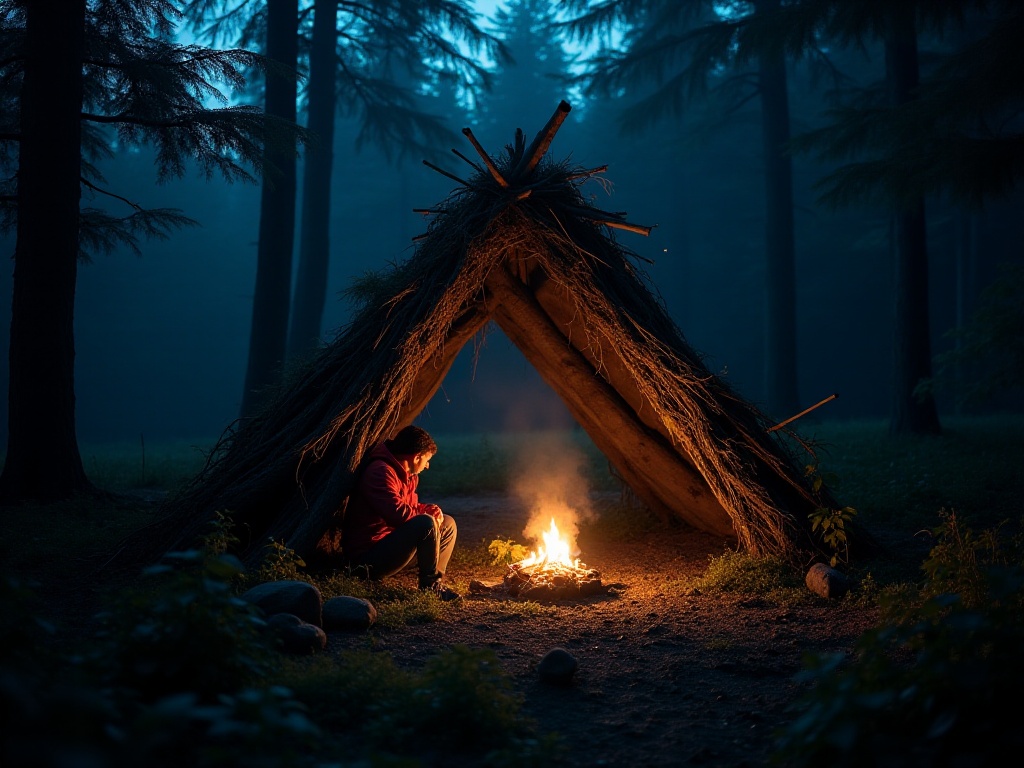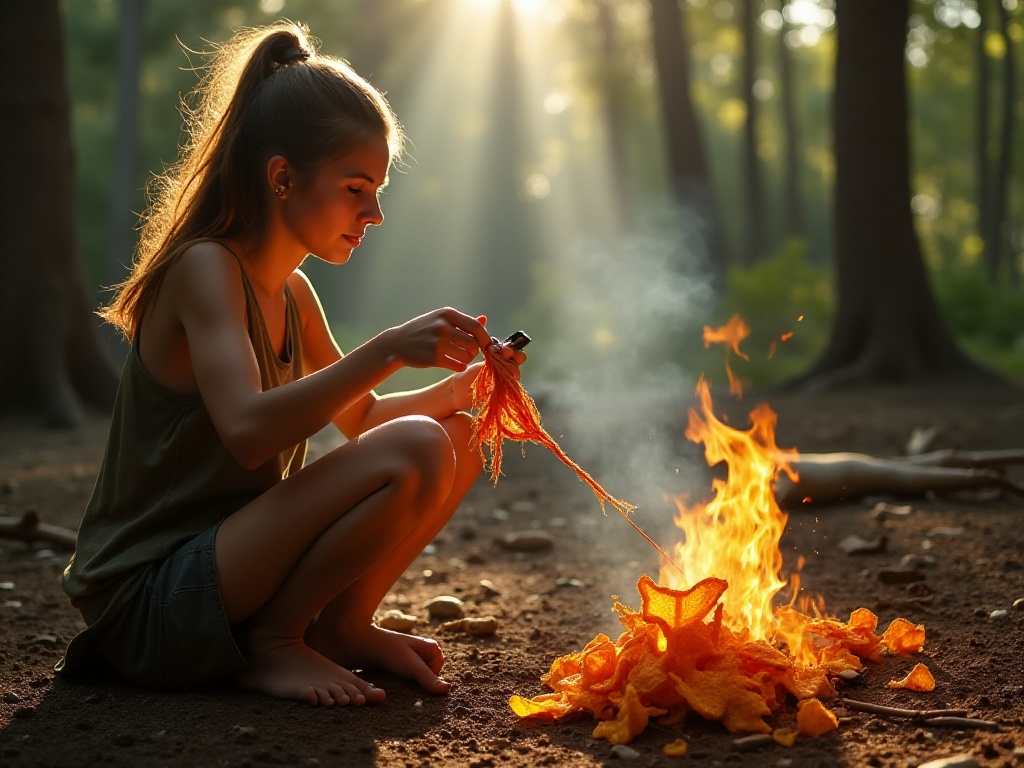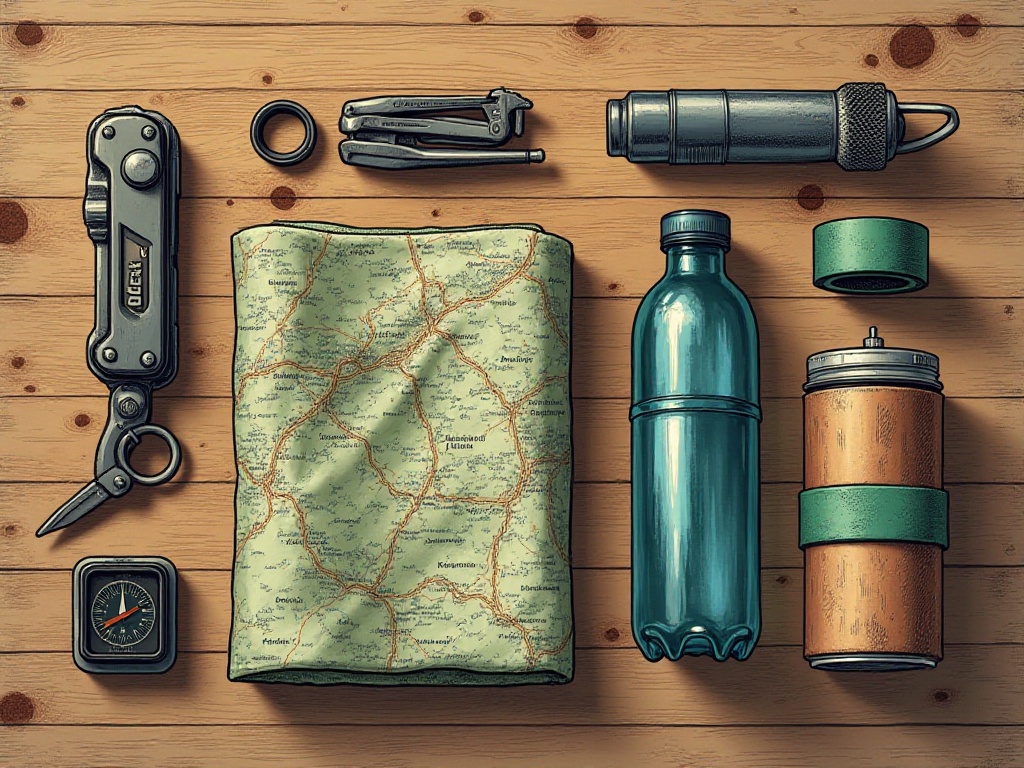Recently, I went on a wilderness adventure with a group of hiking enthusiasts, which gave me a completely new perspective on wilderness survival. As someone who often introduces newcomers to wilderness survival, I've noticed that many companions focus on those seemingly cool skills like fire-making and shelter-building. But honestly, the most important lesson is often overlooked.
Before Departure
Truth be told, the most crucial preparation for outdoor activities is telling someone where you're going. Sounds super simple, right? But I've seen too many people fail to take even this basic safety measure.
Last year, there was an incident where a friend called me for help. His roommate went hiking but hadn't returned a full day past the expected time, and crucially, no one knew where exactly he had gone. The search and rescue team was exhausted, deploying helicopters, drones, and even mobilizing local villagers to search. If only this friend had told someone his specific route and estimated return time, it wouldn't have caused such anxiety and wasted so many search and rescue resources.
On this note, I suggest everyone make these preparations before departure: tell at least two trusted friends your itinerary, including specific routes, estimated time, and emergency contact numbers. With outdoor apps being so advanced now, planning your route ahead and sending screenshots to friends are essential steps.
Also, research the weather conditions at your destination. Don't just rely on a simple weather forecast - mountain weather can change rapidly. I recommend downloading several professional weather apps and paying attention to local weather patterns. I remember once, a teammate didn't check the weather forecast and went mountain climbing in shorts and a T-shirt, only to encounter a temperature drop midway - he nearly turned into an ice pop.
Equipment Section
Regarding equipment, many beginners easily fall into traps. They often buy lots of seemingly high-end gear while neglecting basic protection. Let me share detailed thoughts on equipment selection and usage.
A waterproof backpack is absolutely crucial. I remember once on Mount Wugong, I encountered a downpour with my non-waterproof backpack - it was a disaster. Not only did all my spare clothes get soaked, but my phone also got water damage and nearly broke. Since then, I learned my lesson. Now, wherever I go, I add a waterproof liner to my backpack plus a rain cover for double protection. This trick works wonderfully - I've encountered several downpours since, and everything in my backpack stayed perfectly dry.
When it comes to essential survival tools, there's quite a list. First is a multi-functional knife - you must choose reliable brands, as cheap ones just won't cut it. Among the brands I've used, Swiss Army knives and Leatherman are good choices. Though expensive, their quality and durability are worth the price.
Lighters are also essential - better prepare two or three and store them in different places. Don't think this is excessive - I've seen several cases where teammates' lighters got wet or ran out of gas, making it impossible to even boil water at night.
Emergency blankets look like thin foil but their warming effect is remarkable. Once, a girl in our team was exhausted and showing signs of hypothermia - wrapping her in an emergency blanket helped her recover quickly. These things are lightweight, compact, and highly cost-effective.
First aid kits are also standard equipment. Besides regular band-aids, bandages, and disinfectant, I also carry extra muscle tape and bruise ointment. Often, injuries aren't major problems, but without timely treatment, they can affect the entire trip. I remember once, a teammate didn't treat their blister promptly, resulting in an infected foot and forcing them to withdraw mid-journey.
These pieces of equipment together weigh about one kilogram, but they can be lifesaving in critical moments. I suggest getting an organizer to keep these small items together, making them easy to find when needed.

Skills Section
When it comes to wilderness survival skills, many people's first thought is fire-making and water-finding. However, I believe knot-tying is the most basic and practical skill. Though there are many ready-made tools available now, mastering a few basic knots can help solve many unexpected problems.
Take our recent experience - when we were camping, one of the tent's guy lines broke. Without knowing how to tie knots, we might have had to sleep under the stars. Fortunately, I had practiced knot-tying plenty, and quickly solved the problem with a double bowline.
Speaking of knots, I recommend mastering at least these few: figure-eight knot, butterfly knot, double bowline, and fisherman's knot. They're not hard to learn - a few days of practice at home with a rope will do. These knots are both secure and easy to untie, with wide applications.
Besides knots, the ability to navigate is also important. Though we have phone navigation now, signals can drop anytime in the wilderness, especially in mountainous areas. At such times, knowing how to use a compass and navigate by the sun and stars prevents you from being completely lost.
I suggest practicing these skills first in nearby parks or small hills. Then, when you actually go wilderness exploring, you won't be overwhelmed. Plus, these skills are really interesting - mastering them gives you a unique sense of achievement.

Survival Section
In emergency situations, what's most important isn't how many fancy survival skills you know, but whether you can stay calm. I remember once when leading a team outdoors, a teammate scraped their leg - though the injury wasn't serious, they panicked and nearly called 120 (emergency services).
In such situations, the first thing to do is stop, take deep breaths, and think about what resources are available. As we often say: panic doesn't solve problems, it only makes them worse.
Here I want to emphasize one distress signal: three short sounds. Whether whistling or shouting, remember this pattern. Why three sounds? Because this is the international distress signal, recognized by search and rescue personnel worldwide. The intervals between the three sounds should be regular, making them easier to identify.
I recommend buying a survival whistle and keeping it attached to your backpack. It's advantageous because it's loud and doesn't require much energy. In case of a real emergency, whistling is much more energy-efficient than shouting.
Also, if you really get lost, don't wander blindly. Find an open area to stop, maintain a clear view if possible - this makes it easier for search and rescue personnel to find you. If there's signal, call for help promptly and try to describe your location and surrounding environmental features as accurately as possible.

Environmental Section
Finally, I want to discuss environmental protection. While outdoor activities are becoming increasingly popular, the accompanying environmental issues are also growing. According to statistics, in 2023, over 5 tons of garbage were collected just from several popular outdoor routes in China - this number is truly heartbreaking.
We often talk about "Leave No Trace" - it's actually a very simple principle: take away everything you bring, leave no garbage in the wilderness. This is responsible not only to the environment but also to future outdoor enthusiasts.
I remember once, we found garbage left by others at a campsite - instant noodle boxes, water bottles, and even used disposable batteries. These items not only affect the environment, but some can cause serious pollution. So we not only took our own garbage but also cleaned up what we found.
Regarding garbage disposal, I suggest preparing different colored garbage bags for sorting waste. For example, separate food waste, recyclables, and other garbage - this makes disposal easier after returning.
Another important point is not to disturb wildlife. We are guests in the wilderness, not destroyers of their habitat. Maintain a safe distance from wildlife, don't feed them, and definitely don't chase or frighten them.
I remember once we saw a group of wild goats in the mountains - everyone was excited, and some wanted to get closer for photos. But we stopped them, because this could not only endanger personal safety but also affect the wildlife's normal life.
Overall, outdoor activities are both a sport and a lifestyle attitude. They allow us to get closer to nature, but we must also learn to respect nature. Only then can we truly enjoy the beautiful experiences nature offers us.
Which of these suggestions surprised you the most? Or do you have any other wilderness survival experiences to share? Welcome to tell me in the comments.







